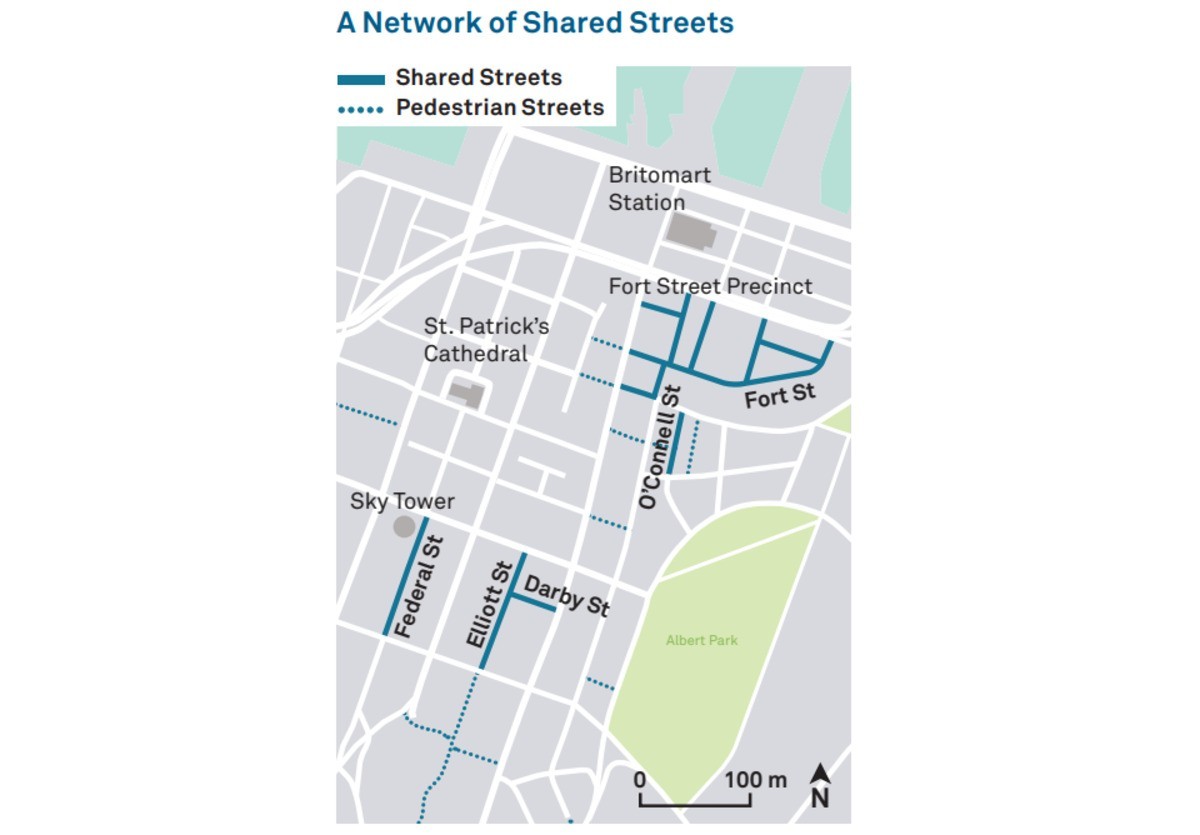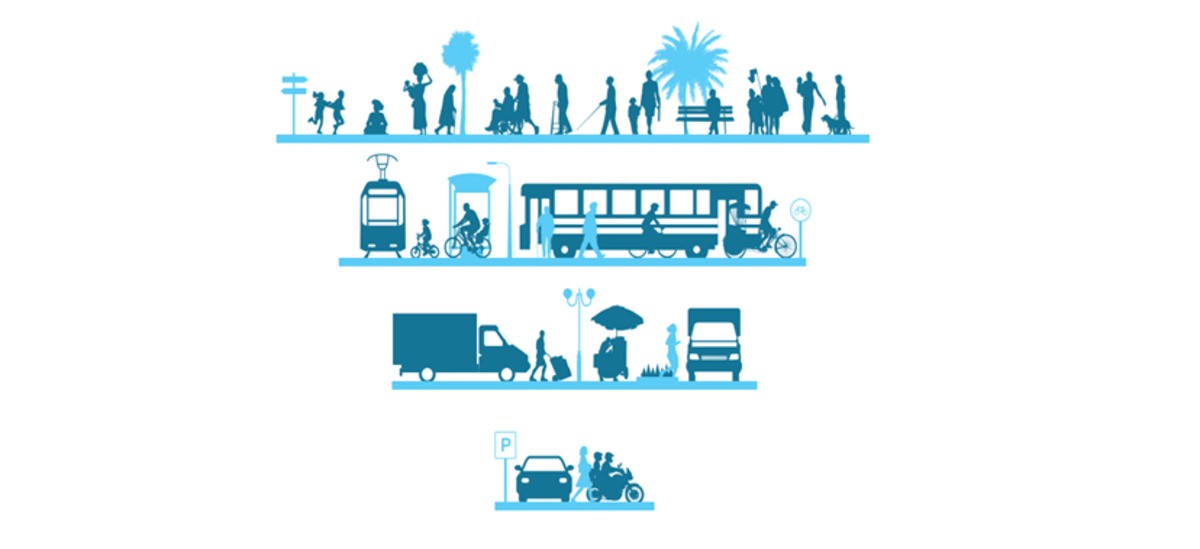[REX] How to redevelop global cities starting from the street? The example of Fort Street in Auckland
La Rue Commune
![[REX] How to redevelop global cities starting from the street? The example of Fort Street in Auckland](https://www.construction21.org/france/data/sources/users/19148/20221021194139-vignetterex-2.jpg)
For several years now, many works on the redefinition of streets have been emerging in the face of climate and environmental crises. This is the case of the Global Street Design guide, produced in 2016 by the Global Designing Cities Initiative, which proposes a new conception of the city.
This article is part of the La Rue Commune project, which is working on the production of a guide to better support citizens and stakeholders in the development of ordinary streets in France.
The "street", what are we talking about?
In 2050, nearly 3⁄4 of the global population on earth will live in cities. Urban spaces must therefore be able to meet the needs of these inhabitants and ensure them a good quality of life, while meeting the requirements of the ecological transition. For the La Rue Commune project, the street, and in particular the intermediate street which is neither a major thoroughfare nor an alley, appears to be an essential lever for transforming cities. Indeed, the development of these streets has an undeniable impact on the quality of life, the health of city dwellers, the protection of the environment and even the services offered in the city.
In an interview given in the context of La Rue Commune , Cécile Diguet , director of the Urban Planning, Development and Territories department of the Paris Region Institute, poses the following definition: “the street is made up of a multiplicity of uses. Very often, street projects only take into account the inhabitants, the residents. However, the street includes many other users: traders, people who develop various activities on the ground floor, strollers, people in marginal situations, etc. [...] In addition to this diversity of uses, the street articulates several types of spaces: the roadway, the sidewalks, the ground floors, the facades of the buildings, the basements, etc. »
A definition shared by the Global Street Design guide, which defines streets as “multidimensional spaces composed of many surfaces and structures. » Deploring that today streets are still too often considered as two-dimensional surfaces, whose main function is car traffic, the guide recommends on the contrary to develop approaches which integrate all these elements at the same time. “Streets form the largest continuous network of public spaces in cities. There is a real challenge in rethinking the design of our streets,” says Fabrizio Prati , Design Director of the Global Designing Cities Initiative. “Until now, we have only developed them to respond to transport and mobility issues. However, the streets are much more than this issue. They can help us to be more resilient, to fight against climate change, to take charge of public health issues such as road safety, air pollution or even chronic diseases, to provide places to sit , rest, relax, play, play sports, shop, etc. »
In this same interview, Sylvain Grisot , urban planner and founder of Dixit, for his part insists on the opportunities for exchange and dialogue offered by the street: "the street is part of a connected network, it is part of a larger territory [...]. The street is a space strategic to maintain a conversation that concerns all urban spaces: how to share the street, what place for the different users, what urban objects are present, etc. ? »
The whole goal of La Rue Commune is to make cities more sustainable and desirable by transforming ordinary streets into “common streets” . This paradigm shift should make it possible to better take into account everyone's uses and needs, expectations on the quality of life, as well as the issues related to global warming or the erosion of biodiversity.
How to transform the streets? The example of Fort Street, in Auckland (New Zealand)
With a residential and commercial vocation, rue Fort originally included a central traffic lane, bordered on each side by parking spaces, as well as sidewalks. However, the city wanted to redevelop this space in order to better integrate it into the surrounding street network, to promote pedestrian movement, to strengthen commercial activities and to guarantee a good quality of life for all users.

Rethinking the hierarchy of uses
The Global Street Design guide advises starting from mobility to rethink cities. This raises the question of uses, which goes beyond the simple issue of mobility. The document thus proposes to change the hierarchy of roads, to put an end to everything automobile: pedestrians must have priority, then bicycles and public transport, then come professional transport vehicles and finally individual motorized vehicles (see diagram below). The guide also insists on the importance of introducing multimodality in the streets when possible, in order to make travel more fluid, increase traffic capacity in terms of the number of people and meet the different needs of street users. . “Sometimes, it is not possible to have all the uses in the same street , specifies Fabrizio Prati, it is necessary to make choices. »

In the case of rue Fort, pedestrians now have priority over the entire space. The city has removed all existing demarcations between these and vehicles (such as sidewalk boundaries) as well as parking spaces. Cars and other vehicles can still circulate, but on a much smaller space and shared with other users. In addition, their presence is limited in time: Auckland has implemented restricted loading times. Furniture (benches, terraces, etc.), sun protection equipment and vegetation have also been added to meet the needs of users, to encourage pedestrians to take ownership of the street and to make it more resilient.
The operation is a real success! Thanks to this development, the volume of cars has decreased by 25% while that of pedestrians has more than doubled (+54%). They also say they feel safer. The transformation of the street has also had a positive impact for merchants and activity spaces: consumer spending there has increased by 47%.
Put all the players around the table
Fabrizio Prati insists on the importance of this co-construction. According to him, development projects face two main obstacles today:
- A technical challenge, linked to the habits of planners. “We have to change the way designers (engineers, urban planners, etc.) do things. It takes awareness. We must allow elected officials and professionals in the sector to become aware of the challenges of the streets. »
- A challenge of inclusion. “It is important to involve all users in the process, to ask people what their needs are, how they feel in this or that street. However, even today, the approach of planning professionals is very top-down. Tactical Town Planning [*] can be a good tool to unlock things. »
This approach to uses and co-construction is shared by La Rue Commune, which particularly insists on the issues of inclusiveness and accessibility through the notion of “common” . This concept indeed defends a new mode of street governance, which proposes a management of all by all, in which each user can get involved at his level and thus reclaim the city.
Guides to inspire!
“Even if each street is different, it is important to propose common methodological bases, to show those involved in the development that they are not alone and that solutions already exist” affirms Fabrizio Prati . “That's why it's important to continue making guides! »
An observation shared by the La Rue Commune project, which hopes to inspire many streets through its work. The project plans to soon publish its own guide, intended for all development actors, to help them set up more inclusive, more peaceful, more resilient streets.
[*] Tactical urban planning designates a civic, participatory and ephemeral urban planning, carried by inhabitants, communities and/or activists, which often mobilizes the springs of art and events. SourceWikipedia.
Consult the "Global Street Design Guide":https://globaldesigningcities.org/publication/global-street-design-guide/



